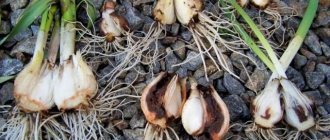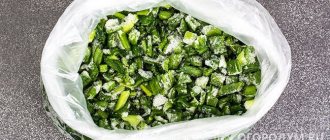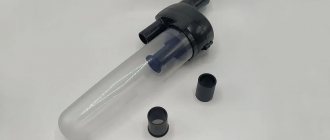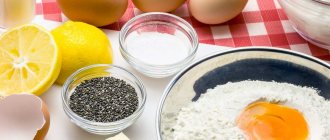To feed seedlings, you can use not only purchased fertilizers and complex mineral preparations, but also folk remedies. For example, onion peels. Usually, a certain amount of peeling from onions consumed during the winter accumulates at home. If you do not throw it away, but brew it in boiling water, you will get a useful fertilizer for seedlings.
Dear readers! For you, we have created communities on social networks in which useful articles and interesting ideas are published several times a day! Subscribe and receive useful content in a convenient format!
In this article we will tell you how to get such fertilizer and what its benefits are.
What are the beneficial properties of onion peels for seedlings?
Onion peels contain many useful microelements, chemical compounds and vitamins. It contains phytoncides that protect plants from pathogenic microflora and increase the immunity of seedlings. It also contains a lot of vitamins (A, B, PP), which seedlings and large seedlings need for healthy growth and development.
In addition, it has been noted that this decoction can be used to protect plants from parasites. For example, thrips, aphids and mites. Onion peels also increase the resistance of seedlings to fungal diseases: rot, bacteriosis, and blackleg.
ON A NOTE. One cannot fail to mention among the advantages that this is an environmentally friendly, non-toxic product. It is easily accessible and easy to use.
The use of onion scales for plant diseases
If you see that zucchini, zucchini, and cucumber seedlings have yellowed leaves. Then take 4 handfuls of onion peels, add a bucket of water (10 l), and boil. Let him insist. Then dilute 2 liters of the prepared mixture with a bucket of warm water and pour over the cucumber seedlings. Also use the mixture on yellowed sprouts of the pumpkin family. In addition, you can use this composition to feed tomato sprouts.
Source of healing quercetin
With improper care: excessive soil moisture, watering with cold water, poor ventilation, too much nitrogen fertilizer, and even sudden temperature changes, you can see how the base of the stem of indoor flowers and garden plants darkens, and then they fall. This means that a fungus has grown on the sprouts. This disease is called "black leg". Onion scales also help in this situation. Fill the husk with water and let it settle. Treat diseased plants 3 times, maintaining an interval of 6 days between treatments.
How to make a decoction of onion peels for feeding tomato seedlings
Tomatoes love this fertilizer very much. It can be used regularly until the harvest of ripe tomatoes.
The prepared solution can not only water seedlings, but also carry out foliar feeding. The main thing is no more than 1 time per week. For greater efficiency, you can alternate watering and spraying.
The decoction is prepared according to the classical scheme: the concentrate is boiled (1 cup of husk per 400 ml of water), then the concentrate is diluted in a ratio of 1 to 10.
ON A NOTE. The decoction left over from dyeing Easter eggs is quite suitable for feeding plants.
Use for plants
As a fertilizer and protection against pests, the husk is suitable for all plants. She is absolutely harmless. What you shouldn’t do is fertilize or treat the berry garden after the fruits begin to swell or color - they may acquire a bitter taste and onion smell.
Feeding
Foliar feeding is most effective. Microelements contained in onion peels are better absorbed by plants through leaves and stems. When the solution is watered on the ground, beneficial substances reach the root system, and it better absorbs macroelements - nitrogen, phosphorus, potassium.
Foliar feeding of plants can be done once every 10-14 days.
When onion peels are used as mulch or placed in holes when planting potatoes or seedlings, it simultaneously acts as an insecticide and fertilizer.
From pests, diseases
Extracts from the peels obtained by peeling onions help cope with the following pests:
- aphids;
- spider mites (for greater effectiveness when preparing a decoction, you can add hot pepper to the onion peel);
- codling moth;
- Colorado potato beetle;
- kidney mite;
- thrips;
- cruciferous flea beetle.
The use of aphid repellent will have a short-term effect if you do not fight the anthills.
The phytoncides and essential oils contained in onions act as a repellent on many insect pests.
The husks will help treat downy mildew and prevent rot or minimize the damage it causes. It’s great that you can water the soil with infusion for healing - it’s less expensive and labor-intensive than other measures.
For seedlings
Seedlings need to be mentioned separately. Onion peels are useful for young plants, acting at the same time as a growth stimulator, safe feeding, and protection against fungal diseases.
Important! The solution will help prevent the appearance of blackleg and minimize damage from accidental overflow.
It is important not to add soap to the infusion, which can burn tender young plants. The concentration is such that the bitterness is barely felt.
As a stimulant
Onion peels are useful when plants planted in the ground do not want to grow or have suffered from overflows, prolonged rains, or sudden cold snaps. Treatments with decoctions and infusions can successfully replace epin or zircon; they work better together with these drugs.
Onion extracts are harmless to humans, cheap, easy to prepare, and bring enormous benefits. They fertilize the garden and vegetable garden, protect plants from diseases and pests, and stimulate growth. Onion peels can be used on almost all crops.
Infusion of onion peels for pepper seedlings
For peppers you can use the same proportions as for tomatoes. You can prepare this solution:
- 2 cups of husks are poured into a container;
- Next, pour out 2 liters of water;
- Place the pan on high heat.
- The mixture is brought to a boil;
- As soon as the water boils, turn down the heat and let the composition boil for a quarter of an hour;
- Next, the broth is infused for the next 24 hours, stirring occasionally.
- The concentrate is diluted 1 to 10 with water and then used to treat pepper seedlings.
ON A NOTE. If you do not have too many young seedlings, then you can reduce the amount of husk with water several times so as not to throw out the unused infusion.
Mulching
The husk needs to be prepared: clean and fungal-free raw materials are dried in any convenient way (in a microwave, oven, outdoors).
After harvesting and preparing the soil for winter, dried onion peelings are applied to future beds using the mulching method, and the area is covered with earth.
In the spring, the soil is loosened, the remains of the husk are buried, and after 2 days the seedlings can be planted in the prepared soil.
Thanks to this method, it is possible to prevent the appearance of pests (insects and rodents).
How to water seedlings with onion peels
There is no special trick to feeding onion peels. The main thing is to maintain proportions. An overly concentrated solution will cause an excess of nutrients in the soil, which will lead to seedling diseases.
It is better to fertilize in the evening. There is no need to water for the next 24 hours after fertilizing.
The solution consumption rate is the same as for regular watering. If you make the infusion a little less concentrated, you can spray it.
Compound
Onion peel is the golden peel of ripened onions. There are many debates about onion peels on the pages of gardening websites, forums and blogs. To figure out where the myth is and where the reality is, let’s take a closer look at the chemical composition and biological activity of natural raw materials.
Organic Ingredients:
- carotene – carotenoid fats, plant pigments, strengthen protective functions, stimulate the development of the vegetative part of plants;
- phytoncides are volatile bioactive substances that kill microbial flora.
Mineral composition:
- calcium – increases soil fertility by activating the activity of beneficial soil flora, stimulates nutrition at the cellular level;
- iron – completely absorbed by plants, a microelement necessary for oxidative and reduction reactions in the soil;
- potassium is a mineral stabilizer of structural processes in the soil, ensures the production of carbohydrates and plant cell growth.
Vitamin complex:
- group B – B1 – growth stimulator;
- PP (nicotinic acid) – promotes the absorption of carbonic acid, participates in the formation of enzymes;
- vitamin C – supports the immune system, optimizes breathing processes and metabolic function; protects seedlings from diseases at the beginning of growth, affects growth processes;
- vitamin E – an antioxidant-stimulator of resistance of garden crop cells against viral infections;
- vitamins of group P - rutin, quercetin - natural flavonoids, antioxidants, neutralize the effects of ultraviolet radiation, heavy metal salts and nitrates; prevent the spread of bacterial infections and viruses, enhance the effect of ascorbic acid.
The benefits and harms of this supplement
First, let's talk about the benefits of such fertilizer.
Firstly, it is a source of useful microelements for plant nutrition.
Secondly, onion broth can be used to prevent the appearance of pests and diseases.
In general, this feeding is practically harmless, but you should not use it on an ongoing basis, since peppers and tomatoes, for example, begin to taste bitter.
Another small drawback of the drug is that it must be used on the same day that the working solution was diluted. Then it begins to rapidly lose its beneficial properties.
What are the benefits of onion peels?
Probably everyone knows that onions are a very healthy vegetable. But how can onion peels be useful for houseplants? It is a source of useful vitamins and microelements, and also has properties such as:
- restores a bush that has begun to fade;
- strengthens resistance to diseases;
- saturates the soil mixture with useful elements;
- fights various pests (nematodes, mites and thrips);
- promotes better flowering of plants.
Sprouted persimmon tree seeds for growing in Russia (advertising)
Common mistakes
- Watering seedlings with concentrate. The resulting liquid after boiling is a concentrate, not a working solution. It must be mixed with water (1 part concentrate, 10 parts water) and only then used for seedlings.
- Watering with boiling water. The infusion should not be used immediately after preparation. First, it needs to cool down. If you pour boiling water over the seedlings, you will ruin them.
- Too frequent use. This product should be used no more than once a week so as not to cause an excess of nutrients in the soil. In addition, an excess of onion fertilizing can also affect the taste of the fruit.
- Using old infusion. There is no particular harm in this, but there will be no benefit either. The fertilizer loses its beneficial properties within 24 hours.
How to use a decoction or infusion
A solution of laundry soap is usually used as an additional ingredient in infusions and decoctions. It serves as an adhesive so that the liquid does not immediately drain from the plant, but has time to act. This is important whether the owners want to feed garden and garden crops, or use the solution for diseases and pest control.
There are several rules that need to be taken into account so that the medicine or fertilizer made from onion peels works effectively and does not harm the plants:
- perennials can be sprayed with a concentrated solution;
- on garden crops, usually 2 liters of infusion are mixed with 8 liters of water;
- the seedlings are watered with a weak solution without soap - the bitterness in it should barely be felt;
- for cucumbers, tomatoes, strawberries, and other crops whose fruits are above the surface of the soil, spraying is stopped as soon as the ovaries begin to fill (to avoid bitterness);
- when cultivating the soil and fertilizing the roots, do not add soap to the solution;
- the husk is very light; when mulching plants, it is lightly embedded in the soil and watered.
Answers to frequently asked questions
Can onion peels be used as fertilizer?
Yes, this is an excellent remedy for seedlings. It contains many vitamins and other useful substances.
How often to water seedlings with infusion?
No more than once a week. It is also better to alternate watering and spraying.
Will any husk work?
Yes, there is no difference depending on the color of the bulb.
There is some water left after dyeing the eggs, can I use it?
Quite, just remember to dilute it in a ratio of 1 to 10 with clean water.
What seedlings can be fed with this product?
All vegetable seedlings respond well to onion infusion. Cucumbers, peppers and tomatoes are especially fond of this fertilizer.
Fertilizer for house flowers
Caring for plants at home requires even more time and money than growing in the garden. After all, the conditions at home for flowering or decorative deciduous species are not ideal.
It is too dry from the radiators, there is often not enough light - if the windows face north or east. Or there is too much light - if the windows face south. But most exotic plants come from humid jungles, so the conditions for keeping them must be brought closer to natural ones.
Oddly enough, onion peels will help create such conditions. The jungle soil, strewn with dead leaves, branches and fruits, is similar in composition to that which is formed after adding onion peels to it! The same flavonoids, substances formed during decomposition and fermentation, the same tanning properties of mulch.
When feeding indoor crops, you cannot use onion decoctions or infusions for succulents, ficuses and fat plants: instead of developing, they may die. The extracts released from onion peels are completely uncharacteristic of the sands or rocky wastelands of deserts, semi-deserts and dry savannas where these plants live!
To prepare an infusion for the purpose of feeding indoor plants, a multi-layered husk from two large onions of a dark, golden brown color is sufficient. If the color of the husk is light, it is taken from 3-4 onions.
The husk is poured with a liter of boiling water, left for 3-4 days, and plants with signs of wilting or those that have stopped growing are watered first. Usually after 2-3 weeks the plants come to life, begin to grow, and new shoots or buds appear on them.
This infusion is used as a top dressing no more than once every 3-4 weeks - the concentration of nutrients in it is such that the soil can be “overfed”, and the roots of the plants will get burned.
Preservation of the harvested crop
Onion peels are used to preserve the harvest:
- Collected apples will be fresh for a long time if they are placed in a plastic bag with dried chopped onion peels. The bag is tied, shaken, and stored.
- Zucchini, radishes and carrots intended for storage are soaked in a decoction of the husks and dried. In this form, vegetables do not rot and retain their taste for several months.
Apples










